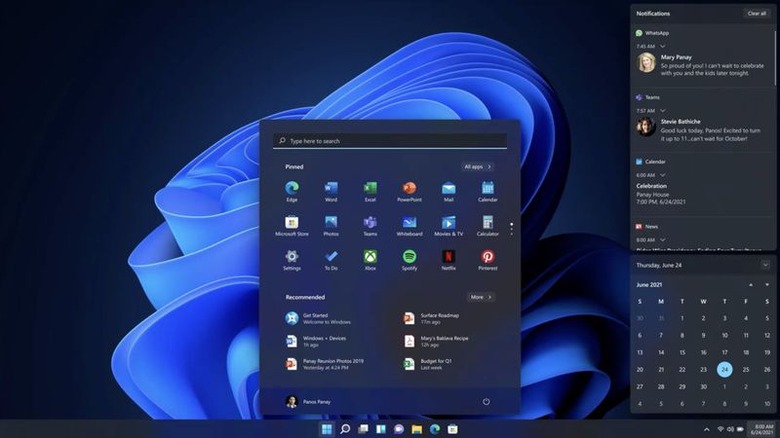Windows 11 Upgrades Are About To Get Less Confusing
Windows 11 is available in public beta right now. You can install it on your machine and test the redesign and new features. There is a huge caveat, however. Not all Windows 10 computers can run Windows 11. That's quite a controversy that Microsoft caused when it unveiled the Windows 11 hardware requirements a few weeks ago. Some people discovered that even newer machines fail the software upgrade test that Microsoft created. We soon learned that there is a particular type of chip that Windows 10 PCs need to have enabled to run Windows 11. It's called the TPM (Trusted Platform Module), without which Microsoft won't let you upgrade to Windows 11. The good news is that TPM issues have a simple fix, and you might not have to do anything to apply it.
Why do I need TPM for Windows 11?
As we've already explained, one of the key features Microsoft focused on for Windows 11 was security. That's why you need the TPM 2.0 chip. TPM performs hardware-based processes related to encryption. It also protects the device against attacks and secures the boot process.
Your desktop or laptop probably has TPM, but it might not be enabled. You'll need to enable TPM functionality on your device so that it can pass the Windows 11 hardware requirements check. Microsoft already confirmed that you can't bypass its restrictions. You can't install the new operating system until your PC passes the health check test.
Enabling TPM on a PC is relatively easy. You'll have to go into BIOS to do it. It might be under a strange name, like Intel PTT or AMD PSP fTPM. Or you can just wait for automatic updates.
Asus enables TPM on supported motherboards
Computer owners rocking Asus motherboards are in luck, as the company has released BIOS updates with automatic TPM support. The update applies to various chipsets, The Verge reports. That includes computers running on Intel Kaby Lake processors from 2017. It's not just Intel, as the updates also support AMD systems.
The updates will enable TPM on your machine, so you won't have to do anything else. Assuming that was the issue blocking your Windows 11 upgrade, then you should be able to run the OS once the BIOS update is installed. Again, you'll still have to pass Microsoft's PC Health Check app after the BIOS update. If you still get error messages, then different hardware issues might be holding you back.
You can read all about the supported Asus motherboards at this link. As before, you'll just have to look for TPM and enable it yourself — it's actually quite simple. If your computer runs on a different motherboard, better check with the manufacturer if you encounter problems. But plenty of motherboard makers have already announced that their old designs support Windows 11 TPM requirements.
